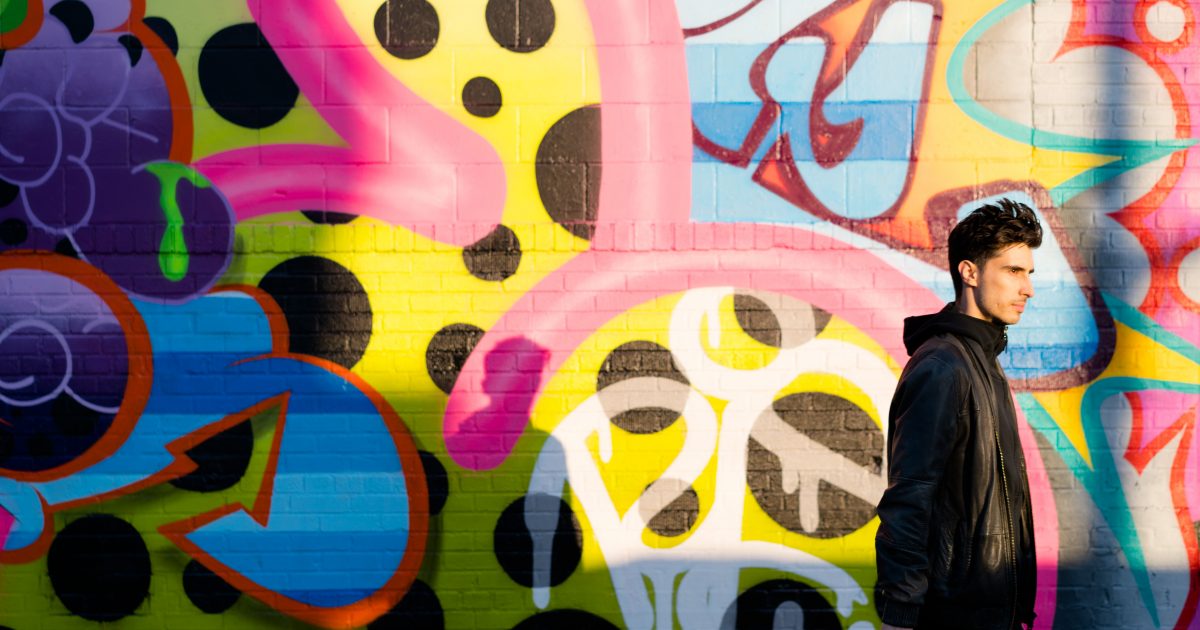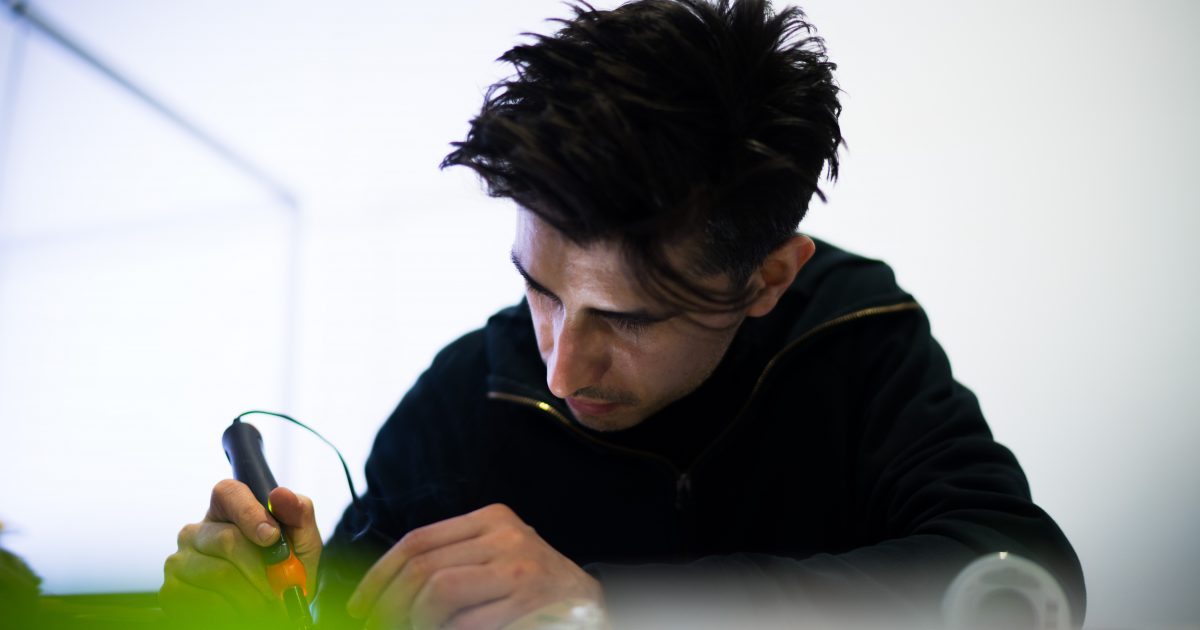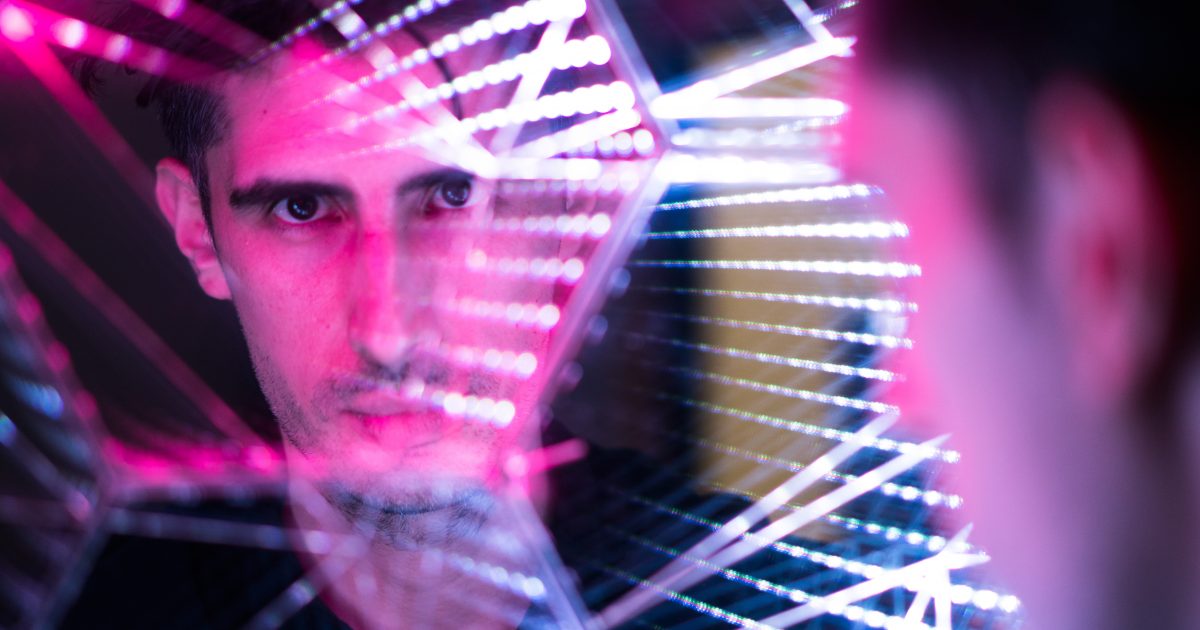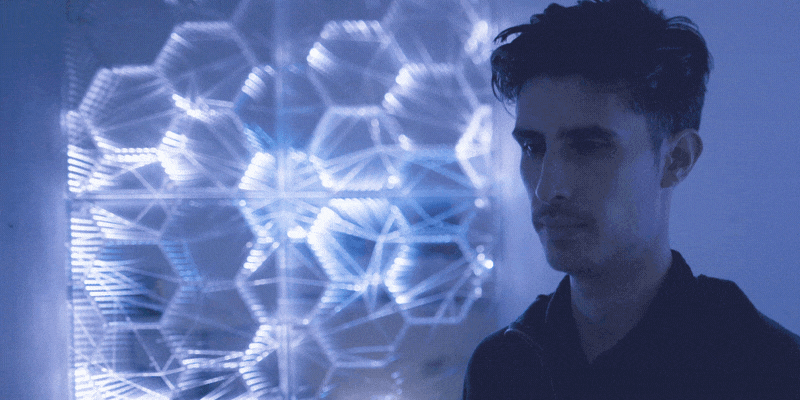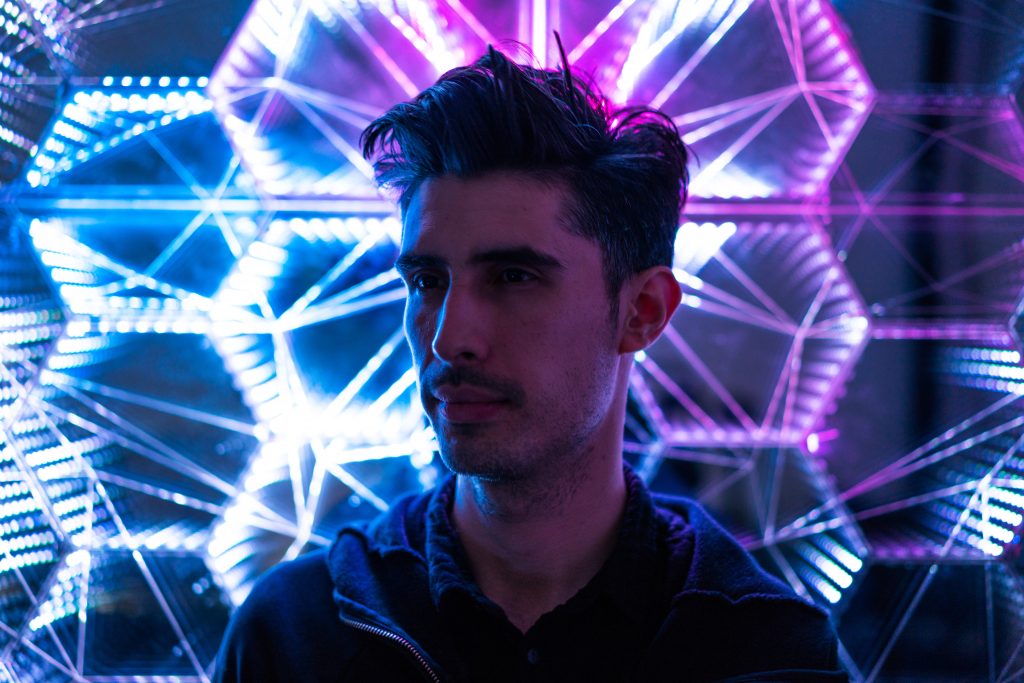
How digital artist Gabriel Pulecio ‘traps infinity’ and creates beehives of light
New York digital artist Gabriel Pulecio makes sculptures with everyday materials – light bulbs, mirrors, acrylic – but his concepts are big and provocative, from “trapping infinity” to toying with the fourth dimension to using light as an elemental object.
His sculptures are vibrant and mesmerizing, with kaleidoscopic shapes and spirals of illumination. A viewer’s presence and movement triggers lights in various patterns, with which Pulecio combines his skill as a designer and passion as an artist to create interactive installations — with the help of a Microsoft Kinect sensor.
“One of the things I like the most about art is that you’re able to inspire people and make them have a unique experience,” says Pulecio, who studied fine art and art history in Bogotá, Colombia, where he grew up.
His unique style grew out of his background as a motion graphics designer, in which he specializes in projection mapping and 3D animation. Over the years, he has worked for top visual effects studios in New York on movies, shows, music videos and commercials. He also helped create 3D graphics for Madonna’s 2012 world tour.
His motion graphics are controlled pieces, dictated by software and digital design. As an artist, he’s intrigued most by random beauty and art that changes with a viewer’s actions. He uses light beams as his medium, fashioning 3D-like sculptures from an intangible source. He uses Kinect to create interactivity, a key component in his work.
For his piece, “Light Collider,” an 8-foot-long acrylic sculpture, Kinect senses a person’s motion, triggering what looks like a dramatic wind tunnel of light. The piece was commissioned by the Day for Night arts festival in Houston last year, where the curator called it “strikingly simple and poetic,” despite complex fabrication and design.
“As you walk around it, it generates light and sends it to the front of the sculpture, so you feel this thing is kind of alive,” says Pulecio, who built the sculpture with audio designer and collaborator Jeff Dodson.
Kinect also powers one of Pulecio’s newest projects, in which a person’s movement activates hexagons, ripples and beehives of light. Light and infinity mirrors act as “pure elements” to create illusory objects, and interactivity creates surprise and discovery. Music and audio effects enrich the experience.
“You’re making ripples of light in this infinite frame by walking around the room,” he says. “When you interact with something, you are engaging, even if you don’t like it aesthetically. You engage with the thing and start some kind of conversation with it.”
Pulecio also brings an art student’s view to modern design. His “Saturn Submerged,” a small box of programmable lights and mirrors, “creates an illusion of infinite space trapped inside a box.”
He was challenged by the possibility of “being able to physically bind the concept of infinity into a finite place.” He also enjoys exploring the concept of time as a fourth dimension, in which art is experienced in ephemeral moments.
“The experience will only happen in that moment, that day, that second, that place. And it will never repeat, because the moment has passed,” he says. The randomness of human interaction and refracting light are crucial parts of those moments.
For Pulecio, Kinect has become an essential tool for creativity, with skeletal tracking, depth-mapping and video capabilities that are easy to use and work well with design software. “It’s the only sensor that allows me to achieve the effect I’m going for.”
He says Kinect’s interactive qualities help people experience art more deeply, and enhances his passion to make art that connects people through new and shared experiences.
“This goes back to making art for everyone,” he says. “Anyone can engage in art, from kids to adults. You can engage just by realizing that you are changing the moment.”
Learn more about Pulecio on his Instagram page and check out Microsoft’s Facebook, Instagram and Tumblr pages.






